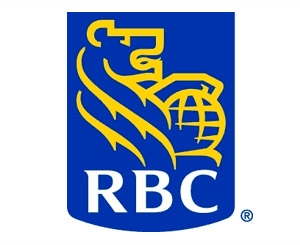CCCJ Tohoku Partnership Committee Activity
By: Christian Howes, Chair, CCCJ Tohoku Partnership Committee.
On the weekend of 30 June/1 July 2012, I was fortunate to be able to accompany videographer Yu Iwasaki of the recovery related website Ganbatte 365 as he visited two islands on Japan's northeast coast off its main island of Honshu. We spent two days documenting two specific NGO initiatives to support the recovery process of communities that were forever changed by Tsunami of the 11th of March 2011. Sixteen months after the quake most people have places to live and food. Few residents, particularly of the islands off the coast of the mainland have any clear ideas regarding how or even what they can or should rebuild. Most of these populations are older people who have been active all of their lives. Leaving their island homes seems impossible to most of them. This process would also be a negative for Japan who will lose living links to historic, healthy and viable fisheries and aquaculture. The world would lose vitality in one of the few places in Asia where traditional lifestyles exist in harmony with nature.
The Japanese government has finally managed to fund and start work on some large infrastructure projects in the Tohoku region. They have not been able to focus on the daunting details of rebuilding many towns and even larger cities and industries.
The theme for our weekend and most of the people we met in the region is "korekara" or (it starts) from now on. We were able to see first-hand how tough it is for people to embrace change and even the assistance offered by outsiders.
The first day was spent in Ooshima an island 30 minutes ferry ride out of the northern fishing port of Kesennuma. The island gets water and electricity from the mainland but has no bridge. The tsunami hit the island from both sides and then washed across the lowest elevation in the middle. The wall of water destroyed the ferry terminal and virtually all of the docks and beds of the local kelp and oyster farmers.
The organization we had come to meet was installing lights powered by solar panels in the many places where electricity is not yet avail for public lights. The first one they installed was on the municipal dock where a small ambulance launch is kept ready to take anyone who falls sick or injured between sundown and sunup when the ferry does not run. They will soon install lights on the hill above the ferry terminal that will allow the ferry captain to safely dock at night. This will dramatically change the daily lives of workers and students who commute from the island as well as improve the chances that tourists will return. On the day we visited they were installing a solar light behind the home of a couple in their eighties who survived the tsunami by clinging to the roof beams inside their traditional home. Across a small road from them a tourist hotel was gutted by the wave. The light will cast light on the back of their property and the road that goes up a steep hillside where five other families live. "At night we see all of the lights on the mainland, especially from the moving cars. Here on the island there are some lights from houses but it's mostly completely dark. This makes driving or doing anything at night dangerous. I have gone back to harvesting kelp but I am not sure I will be able to restart and maintain my oyster beds".
The team building the lights were volunteers installing donated equipment. They were passionate about their desire to help. They were also surprised how reluctant people on the island were to accept having a light installed even though they can now see that the panels can create light in the darkness.
The Katsurajima Nori festival
Olympic freestyle skier, Miyuki Hatanaka, recently gave up competition to dedicate her life to "machizukuri" (town building) and improving the mental, physical well-being of people in the Tohoku region. A native of the large fishing port of Shiogama, north of Sendai, she has organized many expeditions of volunteers to clean up local towns and beaches, especially in the Urato islands. One of the famous Tohoku coast tourist attractions is boat tours out of Matsushima, a world heritage site. The boat tours of this famous scenic site often swing far enough south to show tourists the four Urato islands that were once famous for nori (seaweed) and kaki (oysters) but they never stopped.
This has meant that the Urato islands are 30 minutes out of Shiogama but 30 years out of step with the rest of Japan. On Katsurajima they have access to the internet but since the elementary school was closed nine years ago it's hard to imagine it's used for anything other than email or checking the weather. The residents seem much more in tune with the sea than anything on twitter or Facebook. Before the tsunami there were 240 people on Katsurajima. Now there are 160. Fourteen people farm nori and 5 still have some oyster beds. Before 3.11 there were 10 nori drying plants on the islands in private homes. After the quake there are now 4. In total these machines cost ¥5 mill or $60,000 to set up. To harvest last year's crop they shared equipment. The government has started to build two new dryers which will be shared by the remaining farmers on Katsurajima and at least one of the other four Urato islands.
In an effort to help brand the islands as a destination and give local residents a chance to take pride in their local high margin produce, Miyuki decided to set up a summer nori festival. The one day event was to showcase local food and talent with local dancers from the ages of 3-13 performing a dance to a jolly song that extols the virtue of bounty of nori from the sea. Local performers from the popular music world with roots in Tohoku added star power to the event. Despite the on and off drizzle one frequently gets in June in Japan, nine hundred people showed up for the food and the fun. Miyuki had three official sponsors of the event. K2 skis, Underarmor (activewear) and the Canadian Chamber of Commerce in Japan. The CCCJ was the only sponsor who provided cash. Miyuki was very grateful as she funded most of the expenses of the event including the recording the Nori song from her own pocket.
The rain made the island's issues clear. In the public area close to the small harbour and ferry docks there is nowhere to sit down. The Tsunami gave the town more open space but there are few places to sit and no places to buy local food. The local women are keen to create a location where they can cook local delicacies such as Norijiru (Seaweed soup) and Kaki Curry for visitors. This is a project that Miyuki is keen to move forward. She is clearly a woman with a mission and very capable of using her many contacts to make things happen.
For further information on the activities of Shiogama Nori Festival Committee, please visit here: http://blog.goo.ne.jp/miyuki-sora (Japanese Only)
Text box for Christian Howes article
At our June 15th, Joint Chamber Summer Cocktail party the CCCJ raised roughly 300,000 yen, which our Tohoku Partnership Committee divided up among 3 causes: Shiogama Nori Festival, as described in this main article, NADIA’s Canada and Quebec Festival in Ishinomaki & Ganbatte 365’s “Million Hearts to Japan” project.
NADIA – Canada and Quebec Festival in Ishinomaki:
Over June 23rd & 24th in Ishinomaki, international volunteer group NADIA hosted the Canada and Quebec Festival in Ishinomaki. The program included ball hockey and soccer matches organized by the Tokyo Canadian Hockey Club and other local sports groups, which entertained 60 kids over the 2 days. Aside from the sporting activities, over 150 people enjoyed Canada Day & St-Jean Baptiste Food Festival taking in an extra dose of Canadian & Quebec culture. CCCJ funding was used to feed the crowd with Canadian delicacies including Poutine, "Pate Chinois" and other tasty treats.
Ganbatte 365 – Million Hearts to Japan:
Early this year, the "Million Hearts To Japan" project collected thousands of messages for Tohoku. Instagram photo messages especially touched hearts and inspired direct dialog between people of Japan and supporters around the world. One Instagrammer, Santo Thie, stood out when he rallied Singapore IGers to spread the word of the project. With the generous support of CCCJ and Nimnak Travel, Ganbatte 365 was able to invite Santo to Tohoku, to connect directly with the people of Tohoku, and help spread their stories even further.




























